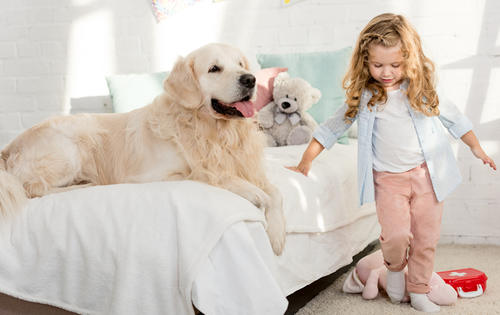Labrador Retrievers, with their friendly nature and boundless energy, make wonderful companions for families and individuals alike. However, their exuberance can sometimes lead to behavioral challenges if not properly addressed through training. Whether you’re a new Labrador owner or looking to enhance your pet’s obedience, this guide will provide you with seven effective Labrador Retriever training techniques to ensure your Labrador Retriever becomes a well-behaved and obedient member of your family.
Positive Reinforcement Training
Positive reinforcement training is a cornerstone in Labrador Retriever training. This technique involves rewarding your dog with treats, praise, or toys when they exhibit desired behaviors. Start with simple commands like “sit” and “stay” and reward your Labrador each time they follow the command correctly. Over time, your dog will associate these behaviors with positive outcomes, making them more likely to obey your commands.
Positive reinforcement not only builds a strong bond between you and your Labrador but also helps them understand what behaviors are expected. Keep training sessions short and frequent to maintain your dog’s interest and avoid overwhelming them.
Clicker Training
Clicker training is another effective method for Labrador Retrievers. It involves using a small handheld device that emits a distinct clicking sound when pressed. The click is paired with a reward, such as a treat, to reinforce good behavior. Labradors quickly learn to associate the click with a positive outcome, making it a powerful tool for teaching new commands.
To start clicker training, choose a specific command or behavior you want to teach your Labrador, such as “heel” or “fetch.” When your dog performs the desired action, immediately click the device and offer a reward. Consistency and timing are key to successful clicker training.
Crate Training
Crate training is essential for ensuring your Labrador Retriever is well-behaved, especially when left alone or during housebreaking. Dogs have a natural instinct to keep their sleeping area clean, so a crate can help establish a designated space for them. Start by introducing your Labrador to the crate gradually, making it a comfortable and inviting space with a soft bed and toys.
When using a crate for training, never use it as a form of punishment. Instead, use it as a safe and secure place where your Labrador can relax and feel at ease. Over time, your dog will learn to associate the crate with a positive environment, making it a valuable tool for behavior management.
Obedience Classes
Enrolling your Labrador Retriever in obedience classes is an excellent way to ensure comprehensive training. Professional dog trainers can provide expert guidance, socialization opportunities, and structured training sessions. These classes often cover basic commands, leash training, and problem-solving techniques.
Obedience classes also expose your Labrador to other dogs and people, helping them become more well-rounded and sociable. Be sure to choose a reputable trainer who uses positive reinforcement methods, aligning with your goal of a well-behaved and happy Labrador.
Socialization
Socialization is a crucial aspect of Labrador Retriever training. Early exposure to various environments, people, and animals helps prevent behavioral issues such as fearfulness or aggression. Take your Labrador to parks, beaches, and other dog-friendly places to expose them to different experiences.
During socialization outings, pay close attention to your Labrador’s reactions and body language. Ensure that these experiences are positive and stress-free. Gradually increase the level of complexity in social situations as your dog becomes more comfortable and confident.
Consistent Routine
Labrador Retrievers thrive on routine. Consistency in training schedules, feeding times, and exercise routines helps your dog understand expectations and reduces anxiety. Establish a daily routine that includes regular training sessions, exercise, playtime, and rest.
Consistency extends to using the same commands and hand signals consistently. This ensures your Labrador doesn’t get confused and responds predictably to your cues. A well-structured routine can greatly contribute to successful Labrador training.
Patience and Persistence
Training a Labrador Retriever can be both rewarding and challenging. It’s essential to remain patient and persistent throughout the process. Understand that every dog learns at their own pace, and some commands may take longer to master than others.
Avoid using punishment-based training methods, as they can lead to fear and aggression. Instead, focus on positive reinforcement and celebrate small victories along the way. With dedication and perseverance, your Labrador will become a well-mannered and loving companion.
Labrador Retriever training is a journey that requires dedication and the right techniques. Positive reinforcement, clicker training, crate training, obedience classes, socialization, a consistent routine, and patience are the keys to success. Remember that professional dog trainers can offer additional guidance and support on your training journey. With these techniques and a lot of love, your Labrador will thrive as a well-behaved and cherished member of your family. If you find yourself struggling with training, consider seeking help from a professional dog trainer to ensure the best possible results for your beloved Labrador Retriever.


